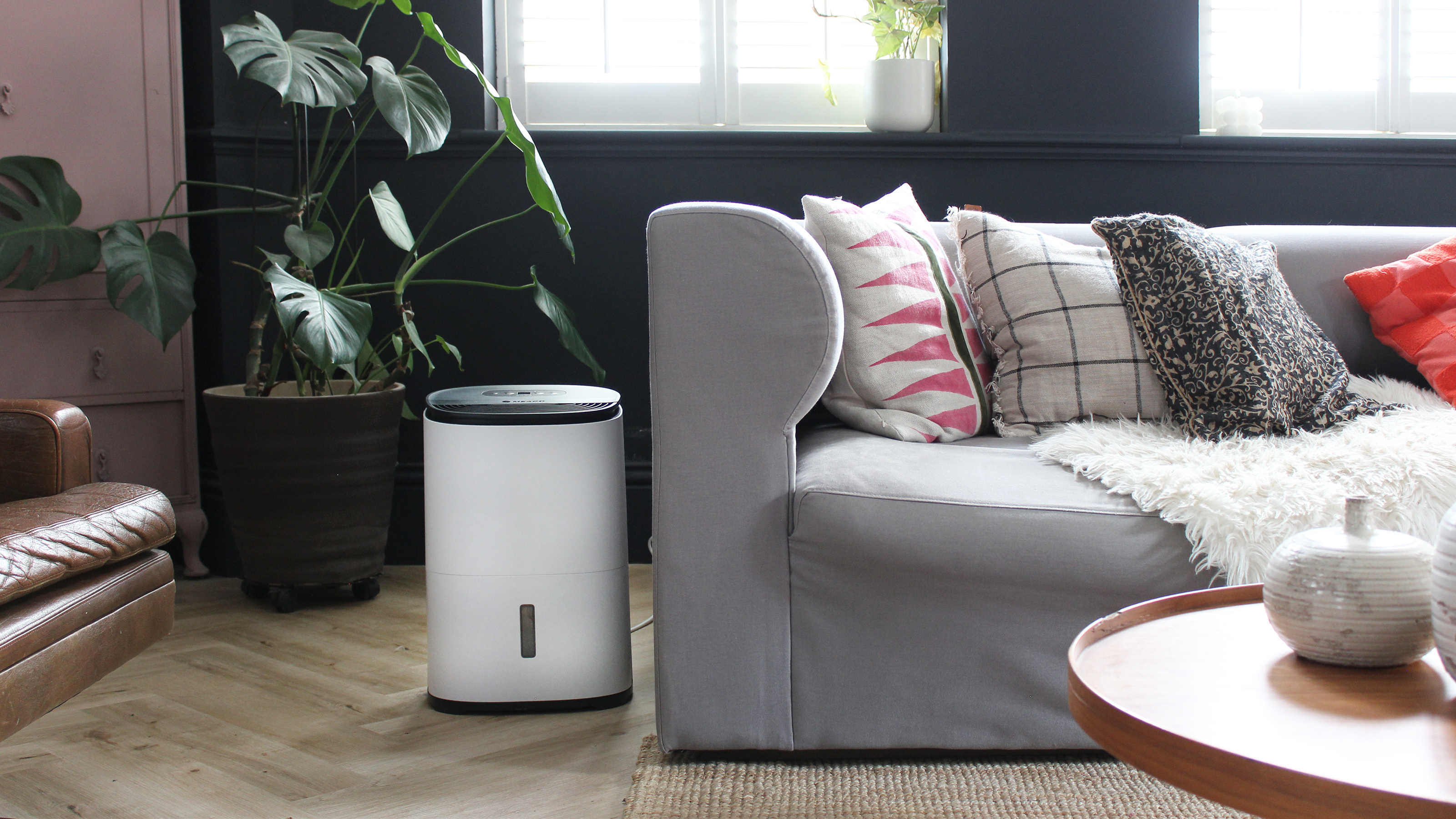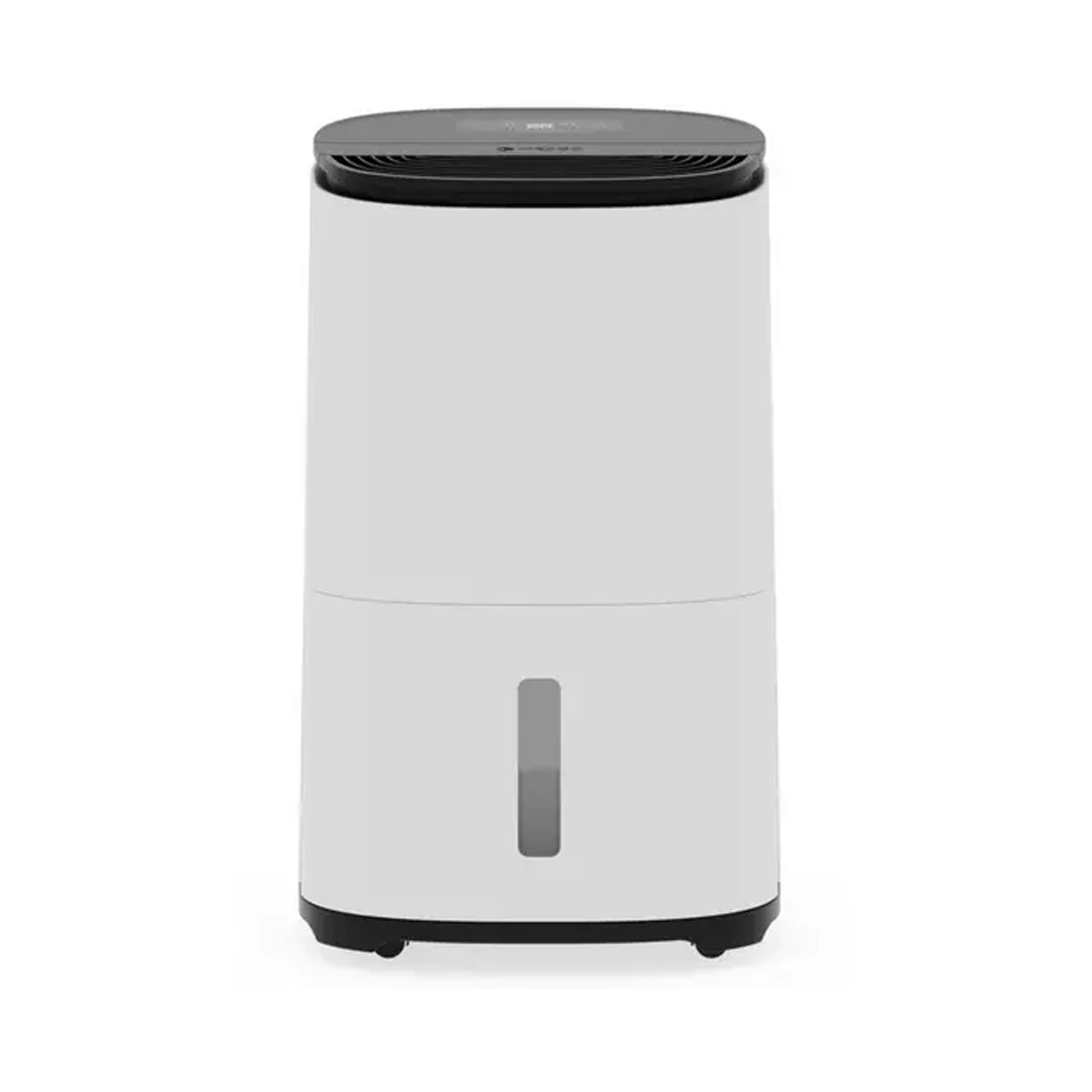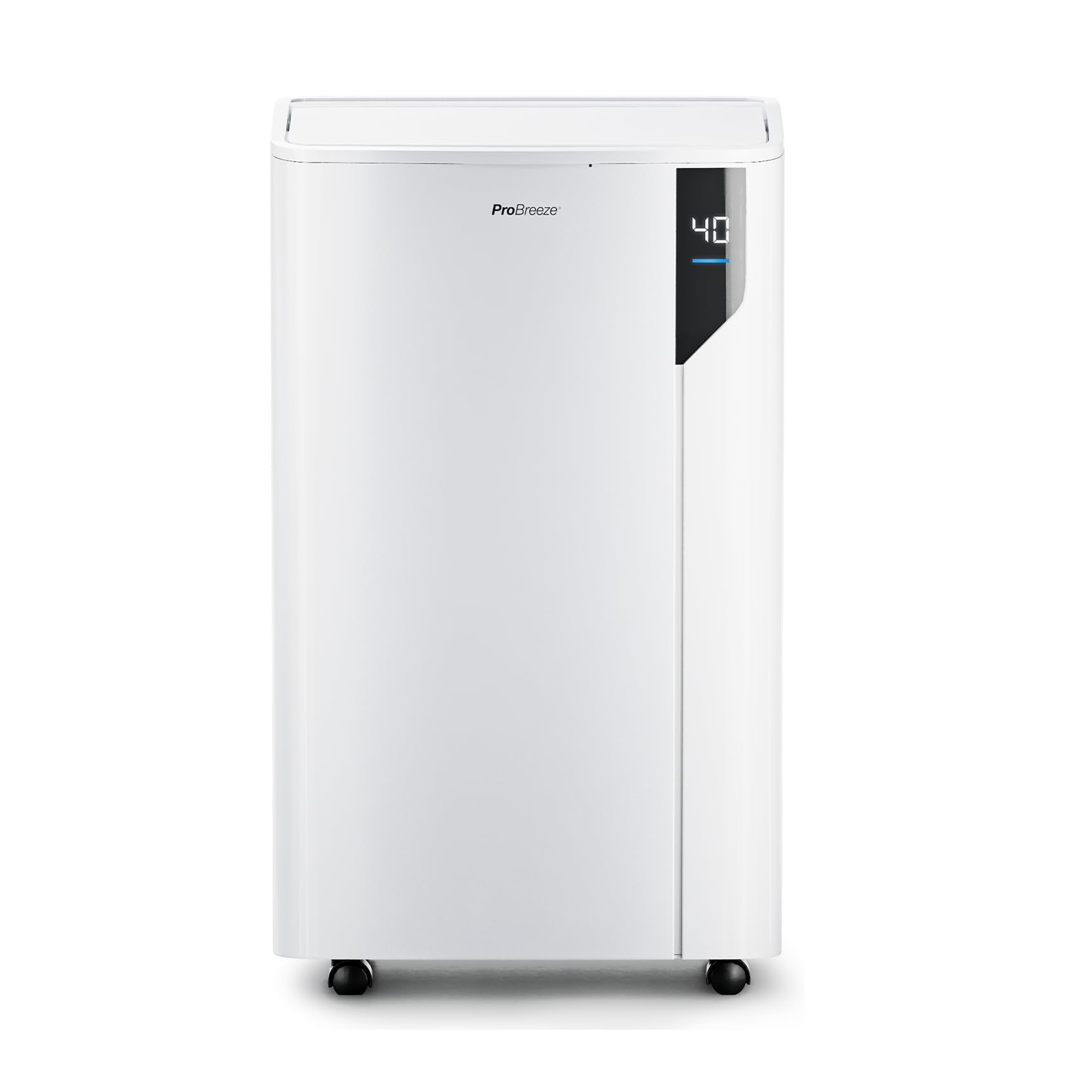What size dehumidifier do I need to dry clothes? Experts reveal the perfect size to dry your clothes in record time
Size matters when it comes to drying your clothes


‘What size dehumidifier do I need to dry clothes?’ is a question you may be asking yourself now that the weather is cold and wet. Thankfully, we’ve got the answers you need.
When searching for the best dehumidifier, the wide variety of options on the market can be daunting. Not only are there different types of dehumidifiers, but there are also different features and different sizes. And if you want to dry clothes fast without a tumble dryer, focusing on size is very important.
But what size dehumidifier do you need to dry clothes? Well, this all depends on your personal circumstances, and our experts have got the low-down on how you can work out what size you really need.
What size dehumidifier do I need to dry clothes?

In recent years, dehumidifiers have become increasingly popular. Not only can this home appliance help to keep damp at bay, but it can also help to dry your clothes during the winter months when you can’t hang them outside.
An Ideal Home favourite, we’ve made it our mission to understand just how well dehumidifiers can dry clothes - and we’ve tested them against other drying methods, including dehumidifiers vs tumble dryers and dehumidifiers vs heated airers. In both tests, dehumidifiers came out on top. However, size really does matter when it comes to this household task.
‘All dehumidifiers can help dry laundry, but getting the right size for your requirement can help speed up the process,’ explains Chris Michael, managing director of Meaco. ‘A more powerful dehumidifier will do the job quicker and will cost less per litre of water collected, but it’s worth bearing in mind that the more powerful it is, the noisier the machine will be.’
Chris also provided us with information on what size dehumidifier you need in terms of your own personal laundry requirements. He suggests:
Sign up to our newsletter for style inspiration, real homes, project and garden advice and shopping know-how
- 10L dehumidifier: The best dehumidifier for a solo person with a limited amount of washing to be dried.
- 12L or 20L dehumidifier: The best dehumidifier for drying the washing of 3-4 people every week.
- 25L dehumidifier: The best option for a larger family with lots of washing to dry a few times every week.

Chris has been advising on humidity solutions and dehumidifiers since 1991 and is well known within the dehumidifier industry across the world as a lead on innovation and sustainability. With a wealth of experience in the industry, Chris is committed to helping provide low-energy and low-noise solutions appliances that improve the lives of customers.
Tips for choosing the right size dehumidifier for drying clothes
If you need a little more information on how to choose the right size dehumidifier for drying clothes, these tips should have you covered.

1. Choose one with laundry mode
There are so many different dehumidifiers out there, but if you’re buying one with the main intention of drying clothes, it’s best to opt for one that comes with laundry mode. ‘This is a higher speed fan setting with a lower relative humidity target that compensates for the additional moisture coming from the clothes,' explains Chris.
‘Laundry modes will run for six hours, which is typically how long an average load of wet washing takes to dry. At that point, the dehumidifier will then switch itself off to save electricity.’
Not only will this make drying your clothes with a dehumidifier more efficient, but it will also help to save money in the home as you know the appliance will only be on for as long as it needs to be.
2. Look at the room
Where do you dry your clothes? Whether you have a dedicated utility room or you just use your spare room, this can also impact which dehumidifier you use, as ultimately, the bigger the room, the bigger the dehumidifier you need.
‘In a perfect world, run the dehumidifier in your ‘laundry room’ often enough so that the relative humidity in there never goes above 50%rh (relative humidity) – you won’t dry clothes fast in a damp room,’ says Chris.
‘Selecting as small a space as possible to do so will enable the dehumidifier to dry washing quicker as restricted airflow means the dehumidifier is focused on reducing humidity within the immediate vicinity. For the same reason, make sure the windows in this room are closed.’
Our guide on the best room for drying clothes with a dehumidifier should help you understand a little more about this.

3. Assess your laundry requirements
Every house is different when it comes to their laundry requirements. Households with a mixture of kids and adults may find that their washing machine is constantly running with full loads, while those who live alone may only wash a couple of items every week. This will ultimately affect how big of a dehumidifier you need.
Heating expert Rob Nezard, MD of UK Radiators, explains, ‘If you're drying a small load of clothes, you can get away with a smaller dehumidifier. But if you're drying a large load, you'll need a larger dehumidifier to keep up with the moisture.’
4. Consider the noise level
With so many brands offering perfectly sized dehumidifiers for your clothes-drying requirements, you can also knuckle down your options by looking into the specifications of each. And noise level is something you should probably consider.
Rob says, ‘If you're sensitive to noise, you'll want to choose a dehumidifier that is quiet. Some dehumidifiers are quieter than others, so be sure to check the decibel rating before you buy one.’
This is especially important if you use your spare room as your office and your clothes drying space. If you’re going to be in the room where your clothes are drying, or you’re planning on drying your clothes overnight, you may want to opt for a quieter option.
5. Measure up
Just because a 25L dehumidifier will suit a large family doesn’t mean that the dehumidifier will have a 25L tank. This means that you’ll have to empty it every so often to ensure it works to the best of its ability. While buying a dehumidifier with a smaller tank is normally cheaper and easier to keep out of the way in a smaller home, there are downsides to having a small tank.
Peter Clayton from Trade Plumbing says, ‘Ensure your dehumidifier’s tank isn’t too small or you may have to empty it frequently, for drying clothes, a tank over 1.8 litres should suffice.’
So, always check the specs of a dehumidifier and check out the tank size before committing something that may not work in your favour.

Peter Clayton, Managing Director of Trade Plumbing Ltd, has worked in the plumbing and heating industry for over 20 years. Throughout Peter's career in this industry he has developed a wide range of knowledge regarding home heating solutions and effective plumbing systems. Peter enjoys sharing this knowledge with readers to assist in their plumbing and heating problems by providing straightforward, low-cost and energy-efficient solutions.
6. Weigh up the price
Knowing how much it costs to run a dehumidifier is definitely something you need to consider before you part with your hard-earned money. But this price is ultimately determined by the wattage of the dehumidifier - and, generally, the higher the extraction rate, the higher the wattage will be.
At the time of writing and in accordance with the current energy price cap, a 20L 480W dehumidifier will cost you around 13p an hour to run. On the other hand, a 12L 157W dehumidifier will cost you just 5p an hour.
Unfortunately, with the energy price cap due to increase in January 2024, this will cost you even more in the New Year. Because of this, it’s important to understand how much a dehumidifier will cost you, as this price difference may impact the size you buy.
The best dehumidifiers for drying clothes
If you’re looking to buy a dehumidifier to dry your clothes, we’ve rounded up some of the best tried-and-tested dehumidifiers the Ideal Home team can vouch for.

The best dehumidifier for laundry we've tested, the MeacoDry Arete One is quiet, easy to use, works superbly and is very energy-efficient compared to other compressor dehumidifiers. Plus, its Smart Laundry Mode is brilliant at drying wet washing.

Whilst we don't think it can quite beat the MeacoDry Arete One on overall performance, Pro Breeze's latest launch, the 20L Premium Dehumidifier with Special Laundry Mode, is the best dehumidifier for drying clothes that we've tested.

A desiccant dehumidifier differs from a compressor or Peltier dehumidifier in that it's both able to, and more efficient at, operating in lower temperatures. The EcoAir DD1 Simple MK3 can be operated in any space that's above 1°C, making it a great option for a garage, basement, conservatory, or any unheated room during the winter months.
FAQs
What size dehumidifier is best for drying clothes?
This totally depends on the amount of clothes you want to dry. In general, experts suggest that a 10L dehumidifier is the best option for those who live alone and have a limited amount of washing, 12L or 20L is best for an average family who wants to dry clothes every week, and 25L is best for a larger family who does a few loads every week.
Is it worth buying a dehumidifier to dry clothes?
Yes! Dehumidifiers don’t technically dry clothes themselves, but they do extract moisture from the air, which helps them to dry quicker. This will ultimately stop your home from getting damp while allowing you to dry full loads in a fraction of the time.
Of course, it’s only worth buying a dehumidifier if you avoid making these dehumidifier mistakes. To successfully dry clothes with a dehumidifier, you need to buy the right size for your needs and use it in a small room where it can really work its magic.
Now you know what size dehumidifier you need to dry clothes, you should be able to make an informed decision that will help you cut your drying time and your energy bills.

Lauren Bradbury has been the Content Editor for the House Manual section since January 2025 but worked with the team as a freelancer for a year and a half before that. She graduated with a Bachelor’s degree in English and Creative Writing from the University of Chichester in 2016. Then, she dipped her toe into the world of content writing, primarily focusing on home content. After years of agency work, she decided to take the plunge and become a full-time freelancer for online publications, including Real Homes and Ideal Home, before taking on this permanent role. Now, she spends her days searching for the best decluttering and cleaning hacks and creating handy how-to guides for homeowners and renters alike, as well as testing vacuums as part of her role as the Ideal Home Certified Expert in Training on Vacuums, having spent over 110 hours testing different vacuum models to date!